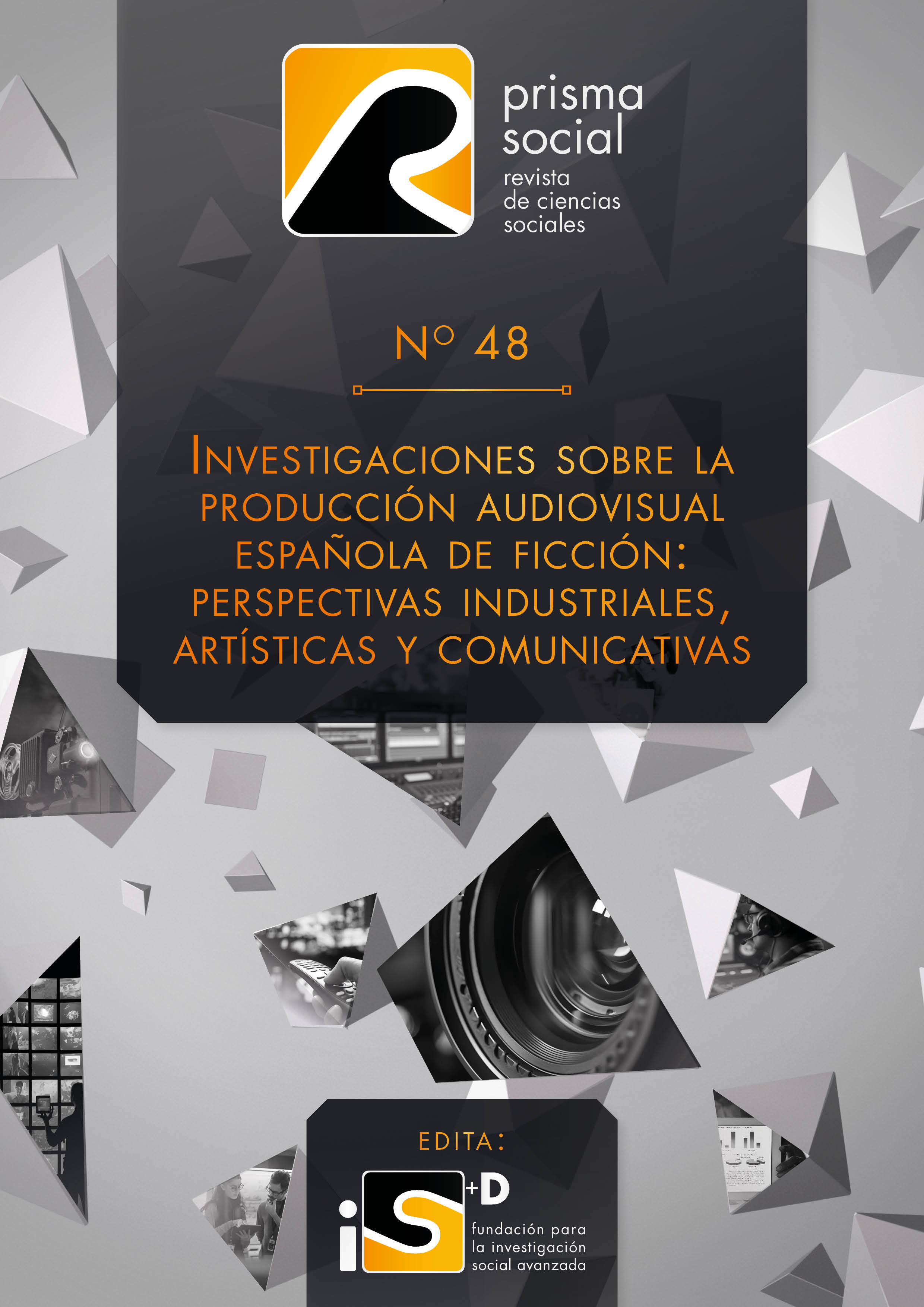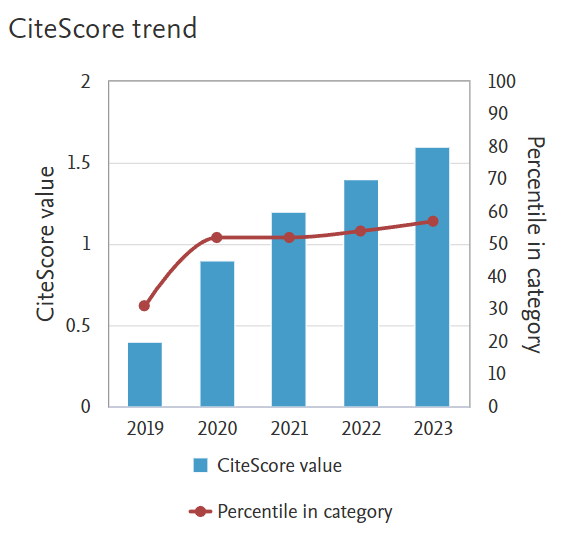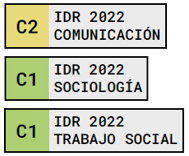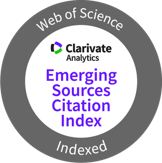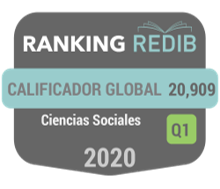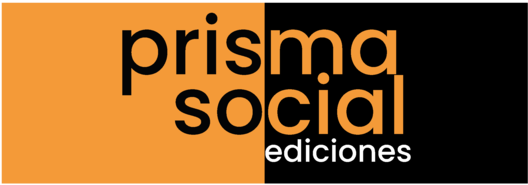The integration of Generative Artificial Intelligence in the audiovisual post-production workflow
The case of La Mesías (Movistar Plus+, 2023)
Keywords:
Inteligencia Artificial, ficción audiovisual, ficción española, La Mesías, industria audiovisual, Stable Diffusion, ControlNetAbstract
The field of artificial intelligence (AI) has witnessed a remarkable surge in advancement, particularly in the realm of machine learning, where notable developments have been observed in the use of convolutional neural networks (CNN) and generative adversarial networks (GAN). The implementation of these technologies in the creative industries has undergone a rapid evolution, progressing from information analysis and data compression to the development of Generative AI (Gen AI) tools for the creation of audiovisual content. This descriptive-exploratory study analyses the application of Gen AI in the audiovisual post-production processes of La Mesías (Movistar Plus+, 2023), which has pioneered the use of AI in the Spanish industrial context. In addition, it explores the characteristics of the visual style resulting from its implementation. The methodological design combines the approaches of Media Industry Studies and organisational sociology, utilising a combination of hemerographic reviews, an in-depth interview and a technical analysis of the affected sequences. The workflow phases in which Gen AI was employed have been identified and classified according to the categories proposed by Anantrasirichai and Bull (2022): content creation, information analysis, content and workflow improvement, and information extraction. The results demonstrate that Gen AI has a significant impact on visual effects and 2D/3D compositing, resulting in a style of enhanced realism with dreamlike atmospheres.
Downloads
References
Aitken, M. (2023). The real threat from AI. NewScientist, 258(3445), 21. https://doi.org/10.1016/S0262-4079(23)01186-7
Amankwah-Amoah, J., Abdalla, S., Mogaji, E., Elbanna, A. y Dwivedi, Y. K. (2024). The impeding disruption of creative industries by generative AI: Opportunities, challenges, and research agenda. International Journal of Information Management, 79(2). https://doi.org/10.1016/j.ijinfomgt.2024.102759
Amato, G., Falchi, F., Gennaro, C. y Rabitti, F. (2017). Searching and annotating 100M images with YFCC100M-HNfc6 and MI-File. En M. Bertini (ed.), CBMI’17: Proceedings of the 15th international workshop on content-based multimedia (pp. 1-4). Association for Computing Machinery. https://doi.org/10.1145/3095713.3095740
Anantrasirichai, N. y Bull, D. (2022). Artificial Intelligence in the creative industries: a review. Artificial Intelligence Review, 55, 589-656. https://doi.org/10.1007/s10462-021-10039-7
Argaw, D. M., Heilbron, F. C., Lee, J. Y., Woodson, M. e In, S. K. (2022). The Anatomy of Video Editing: A Dataset and Benchmark Suite for AI-Assisted Video Editing. En S. Avidan, G. Brostow, M. Cissé, G. M. Farinella y T. Hassner (eds.), Computes Vision - ECCV 2022 (pp. 201-218). Springer Nature.
Audiovisual 451 (17 de noviembre de 2023). VOD Ratings: ‘La Mesías’ entra con fuerza en lo más visto durante la primera quincena de noviembre. Audiovisual 451. https://www.audiovisual451.com/vod-ratings-la-mesias-entra-con-fuerza-en-lo-mas-visto-durante-la-primera-quincena-de-noviembre/
Bédard, P. (2022). Virtual production and the transformation of cameras mechanical, virtual, and actual. Animation, 17(2), 226-243. https://doi.org/10.1177/17468477221102498
Bengasi, S., El-Sayed, H., Sarker, M. D. K., Houkpati, Y., Irungu, J. y Oladunni, T. (2024). Advancements in Generative AI: A Comprehensive Review of GANs, GPT, Autoencoders, Diffusion Model, and Transformers. IEEE Access, 12, 69812-69837. https://doi.org/10.1109/ACCESS.2024.3397775
Black, S., Keshavarz, S. y Souvenir, R. (2020). Evaluation of image inpainting for classification and retrieval. En A. Ross, D. Cox y S. McCloskey (eds.), 2020 IEEE Winter Conference on Applications of Computer Vision (WACV) (pp. 1049–1058). Institute of Electrical and Electronics Engineers (IEEE). https://doi.org/10.1109/WACV45572.2020.9093362
Bostrom, N. (2014). Superintelligence. Oxford University Press.
Bull, D. y Zhang, F. (2021). Intelligent image and video compression: communicating pictures. Elsevier.
Caballero, J. (2023). Hacia una nueva dimensión del montaje cinematográfico: explorando las posibilidades de la inteligencia artificial. Hipertext.net, 26, 53-58. https://doi.org/10.31009/hipertext.net.2023.i26.08
Caballero, J. y Sora Dormenjó, C. (2024). Automation and creativity in AI-driven film editing: the view from the professional documentary sector. Communication & Society, 37(3), 201-218. https://doi.org/10.15581/003.37.3.201-218
Cámara, M. y Blanco, J. L. (2023). FOLEY-VAE: Generación de efectos de audio para cine con inteligencia artificial [Ponencia]. Tecniacústica: 54º Congreso Español de Acústica. Universidad Politécnica de Madrid. https://doi.org/10.48550/arXiv.2310.15663
Cazzaniga, M., Jaumotte, M. F., Li, L., Melina, M. G., Panton, A. J., Pizzinelli, C., ... y Tavares, M. (2024). Gen-AI: Artificial intelligence and the future of work. International Monetary Fund.
Cheng, M. M., Zhang, F. L., Mitra, N. J., Huang, X. y Hu, S. M. (2010). RepFinder: finding approximately repeated scene elements for image editing. ACM. Transactions on Graphics (TOG), 29(4), 1-8. https://doi.org/10.1145/1778765.1778820
Ciller, C. (2009). La producción en la postproducción. El caso de Alatriste. En J. Marzal Felici y F. J. Gómez Tarín (eds.), El productor y la producción en la industria cinematográfica (pp. 411-419). Editorial Complutense.
Ciller, C. y Palacio, M. (2016). Producción y desarrollo de proyectos audiovisuales. Síntesis.
De la Chica, J. (2024, 16 de mayo). “La artista IA de ‘La mesías’: ‘Es una herramienta creativa con muchísima potencia’”. The AI Revolution. https://theairevolution.news/alejandra-g-lopez-artista-ia-de-la-mesias-la-ia-es-una-herramienta-creativa-con-muchisima-potencia/
Devlin, J., Chang, M. W., Lee, K. y Toutanova, K. (2019). BERT: Pre-training of Deep Bidirectional Transformers for Language Understanding. En J. Burstein, C. Doran y T. Solorio (eds.), Proceedings of the 2019 Conference of the North American Chapter of the Association for Computational Linguistics: Human Language Technologies (pp. 4171-4186). Association for Computational Linguistics.
Ding, D., Wang, J., Zhen, G., Mukherjee, D., Joshi, U. y Ma, Z. (2023). Neural adaptive loop filtering for video coding: Exploring multi-hypothesis sample refinement. IEEE Transactions on Circuits and Systems for Video Technology, 33 (10), 6057-6071. https://doi.org/10.1109/TCSVT.2023.3260266
Dunlop, R. (2014). Production pipeline fundamentals for film and Games. Routledge.
Dzmitry, B., Cho, K. H. y Bengio, Y. (7-9 de mayo de 2015). Neural machine translation by jointly learning to align and translate [Ponencia]. ICLR 2015: 3rd International Conference on Learning Representations, San Diego, Estados Unidos. https://iclr.cc/archive/www/lib/exe/fetch.php%3Fmedia=iclr2015:bahdanau-iclr2015.pdf
Elgammal, A. (2019). AI Is Blurring the Definition of Artist. American Scientist, 107 (1). https://www.americanscientist.org/article/ai-is-blurring-the-definition-of-artist
Franganillo, J. (2022). Contenido generado por inteligencia artificial: oportunidades y amenazas. Anuario ThinkEPI, 16 (1), 1-11. https://doi.org/10.3145/thinkepi.2022.e16a24
Fukushima, K. (1980). Neocognitron: a self-organizing neural network model for a mechanism of pattern recognition unafected by shift in position. Biol Cybern, 36, 193–202. https://doi.org/10.1007/BF00344251
Gómez Tarín, F. J. (2006). El análisis del texto fílmico. Beira Interior.
Goodfellow, J., Pouget-Abadie, J., Mirza, M., Xu, B., Warde-Farley, D., Ozair, S., Courville, A. y Bengio, Y. (2014). Generative adversarial nets. En Z. Ghahramani, M. Welling, C. Cortes, N. D. Lawrence y K. Q. Weinberger (eds.), Advances in neural information processing systems (vol. 27) (pp. 2672-2680). Curran Associates, Inc. http://papers.nips.cc/paper/5423-generative-adversarial-nets.pdf
Guerrero-Solé, F. (2024). La comunicación ante el desafío de la inteligencia artificial generativa. Reflexiones, retos y oportunidades en un escenario disruptivo [Informe]. Cultura Difusa.
Guerrero-Solé, F. y Ballester, C. (2023). El impacto de la Inteligencia Artificial Generativa en la disciplina de la comunicación. Hipertext, 26, 1-9. https://doi.org/10.31009/hipertext.net.2023.i26.01
Haugeland, J. (1985). Artificial Intelligence: The Very Idea. The MIT Press.
Helm, J. M., Swiergosz, A. M., Haeberle, H. S., Karnuta, J. M., Schaffer, J. L., Krebs, V. E., Spitzer, A. I. y Ramkumar, P. N. (2020). Machine Learning and Artificial Intelligence: Definitions, Applications, and Future Directions. Current Reviews in Musculoskeletal Medicine, 13, 69-76.
Herbert, D., Lotz, A. D. y Punathambekar, A. (2020). Media Industry Studies. Polity Press.
Honavar, V. (1995). Symbolic Artificial Intelligence and Numeric Artificial Neural Networks: Towards a Resolution of the Dichotomy. En R. Sun y L. A. Bookman (eds.), Computational Architectures Integrating Neural and Symbolic Processes. A Perspective on the State of the Art (pp. 351-388). Springer Nature.
Hu, L., Saito, S., Wei, L., Nagano, K., Seo, J., Fursund, J., Sadeghi, I., Sun, C., Chen, Y. C. y Li, H. (2017). Avatar digitization from a single image for real-time rendering. ACM. Transactions on Graphics (TOG), 36 (6), 1–4. https://doi.org/10.1145/3130800.31310887
Hughes, R. T., Zhu, L. y Bednarz, T. (2021). Generative Adversarial Networks-Enabled Human-Artificial Intelligence Collaborative Applications for Creative and Design Industries: A Systematic Review of Current Approaches and Trends. Systematic Review, 4, 1-17. https://doi.org/10.3389/frai.2021.604234
Jackson, T. (2024). Is artificial intelligence culturally intelligent? International Journal of Cross Cultural Management, 24(2), 209-214. https://doi.org/10.1177/14705958241262164
Jansen, S. C. (2022). What was Artificial Intelligence? Media Studies Press.
Jiménez González, M. y Terrones Rodríguez, A. L. (2024). Desconfianza estética y conflictos ético-políticos ante el reto de la inteligencia artificial confiable: una propuesta ilustrada con casos cinematográficos recientes (2019-2023). Enrahonar. An International journal of Theoretical and Practical Reason, 72(2), 1-21. https://doi.org/10.5565/rev/enrahonar.1575
Jironza Hidalgo, J. (2024). Análisis de la implementación de Inteligencia Artificial como herramienta de postproducción digital audiovisual. Ñawi: arte, diseño, comunicación, 8(2), 165-177. https://doi.org/10.37785/nw.v8n2.a9
Julián Gómez, S. (30 de noviembre de 2023). La postproducción de ‘La Mesías’: universos, alta exigencia y 16 mm. Panorama Audiovisual. https://www.panoramaaudiovisual.com/2023/11/30/postproduccion-la-mesias-universos-alta-exigencia-16-mm/
Kavitha, L. (2024). Copyright challenges in the artificial intelligence revolution: Transforming the film industry from script to screen. Trinity Law Review, 4(1), 1–8.
Lasi, H., Fettke, P., Kemper, H. G., Feld, T. y Hoffmann, M. (2014). Industry 4.0. Business & Information Systems Engineering, 6, 239-242.
Lecun, Y., Bottou, L., Bengio, Y. y Hafner, P. (1998). Gradient-based learning applied to document recognition. Proceedings of the IEEE, 86(11), 2278–2324.
Ledig, C., Theis, L., Huszar, F., Caballero, J., Cunningham, A., Acosta, A., Aitken, A., Tejani, A., Totz, J., Wang, Z. y Shi, W. (21-26 de julio de 2017). Photo-realistic single image super-resolution using a generative adversarial network. En Institute of Electrical and Electronics Engineers (IEEE) (ed.), 2017 IEEE conference on computer vision and pattern recognition (CVPR) (pp. 105–114). Institute of Electrical and Electronics Engineers (IEEE).
López Delacruz, S. (2023). Un vínculo paradójico: narrativas audiovisuales generadas por inteligencia artificial, entre el pastiche y la cancelación del futuro. Hipertext, 26, 31-35. https://doi.org/10.31009/hipertext.net.2023.i26.05
López-Forniés, I. (2024). Evaluando la flexibilidad creativa. Influencia de la Inteligencia Artificial generativa en el proceso creativo. En J. Albar Mansoa (ed.), Innovación y expresión: un recorrido por las artes, la cultura visual y la inteligencia artificial en la era digital (pp. 140-157). Dykinson.
López Frías, C. (2024). The Paradox of Artificial Intelligence in Cinema. Cultura Digital, (2), 5-25. https://doi.org/10.23882/cdig.240999
Maher, M. L. (2012). Computational and Collective Creativity: Who’s Being Creative? En M. L. Maher, K. Hammond, A. Pease, R. Pérez y Pérez, D. Ventura y G. Wiggins (eds.), Proceedings of the Third International Conference on Computational Creativity (pp. 67-71). University College Dublin. https://computationalcreativity.net/iccc2012/wp-content/uploads/2012/05/067-Maher.pdf
Marie, M. y Aumont, J. (1990). Análisis del film. Paidós.
Mitchell, T. M. (1997). Machine learning. McGraw Hill Education.
Nah S. J., Kim, T. H. y Lee, K. M. (2017). Deep multi-scale convolutional neural network for dynamic scene deblurring. En Institute of Electrical and Electronics Engineers (IEEE) (ed.), 2017 IEEE conference on computer vision and pattern recognition (CVPR) (pp. 257-265). Institute of Electrical and Electronics Engineers (IEEE).
Park, S. y Choi, Y. (2022). AI-assisted cinematography: Enhancing creativity through intelligent camera systems. Journal of Computer Animation and Virtual Worlds, 33(2), e2241.
Polo Serrano, D., Micaletto Belda, J. P. y Martín Ramallal, P. (2023). Impacto y oportunidades de la inteligencia artificial en el arte visual: personalización de la creatividad con Stable Diffusion y Controlnet. En A. Gómez Gómez, D. Acle Vicente y M. R. Carballeda Camacho (coord.), Manipulación en imágenes visuales y sonoras en ficción y no ficción (pp. 894-909). Dykinson.
Rachmad, Y. E. (2022). The Role of Artificial Intelligence and Human Colaboration in Management 5.0: A Global Perspective. United Nations Global Compact.
Reddy, V. S., Kathiravan, M. y Reddy, V. L. (2024). Revolutionizing animation: unleashing the power of artificial intelligence for cutting-edge visual effects in films. Soft Computing, 28, 749-763.
Russell, S. y Norvig, S. (2020). Artificial Intelligence. A Modern Approach. Pearson.
Scott, T. (2023). Retrospective Technological Mythmaking: Media Discourses of Furby and Artificial Intelligence. TMG: Journal for Media History, 26(2), 1-24. https://doi.org/10.18146/tmg.849
Shneiderman, B. (2020). Human-Centered Artificial Intelligence: Reliable, Safe and Trustworthy. International Journal of Human-Computer Interaction, 36(6), 495-504. https://doi.org/10.1080/10447318.2020.1741118
Short, T. y Adams, T. (2017). Procedural generation in game design. Taylor & Francis.
Silva Jasaui, D., Martí-Testón, A., Muñoz, A., Moriniello, F., Solanes, J. E., y Gracia, L. (2024). Virtual Production: Real-Time Rendering Pipelines for Indie Studios and the Potential in Different Scenarios. Applied Sciences, 14(6). https://doi.org/10.3390/app14062530
Stump, C. (2021). Artificial Intelligence aids intuition in mathematical discovery. Nature. https://www.nature.com/articles/d41586-021-03512-4
Swarnakar, S. (2024). Artificial Intelligence and Cinema - Exploring the Implications of Artificial Intelligence in Cinema. En S. V. Kashyap, S. Bajaj, S. Bagchi y A. Bairagi (eds.), The Media Mosaic: Exploring Diverse Artistic Forms (pp. 21-26). Innovative Scientific Publication.
Thakur, A. y Ashwani, K. D. (2024). Gore Diffusion LoRA Model. arXiv, 1, 1-11. https://doi.org/10.48550/arXiv.2403.08812
The Business Research Company (2024). Generative AI in Creative Industries Global Market Report 2024.
Tonón de Toscano, G. T. (2009). La entrevista semi-estructurada como técnica de investigación. Revista Latinoamericana de Ciencias Sociales, Niñez y Juventud, 8(1), 45-73. https://revistaumanizales.cinde.org.co/rlcsnj/index.php/Revista-Latinoamericana/article/view/606
Torrejón, O. E., Peretti, N. y Figueroa, R. (2020). Rotoscope automation with deep learning. SMPTE Motion Imaging Journal, 129(2), 16–26. https://s3.cad.rit.edu/cadgallery_production/documents/2305/jmi-estrada-2959967-x.pdf
Trigital (8 de enero de 2025). La IA llega a la gran pantalla, pero ¿de qué va la película?. Trigital Infográfica. https://trigital.es/la-ia-llega-a-la-gran-pantalla-pero-de-que-va-la-pelicula/
Turing, A. M. (2021 [1950]). Computing Machinery and Intelligence. En H. R. Lewis (ed.) Ideas That Created The Future. Classic Pappers of Computer Science (pp. 245-270). The MIT Press.
Utray, F., Armenteros, M. y Benítez, A. J. (2015). Postproducción digital: una perspectiva contemporánea. Dykinson.
Vidovic, J. F. (2021). Inteligencia Artificial: Un futuro inteligible. Cuestiones Políticas, 39(68), 16-20. https://www.produccioncientificaluz.org/index.php/cuestiones/article/view/35389
Viñolo Locubiche, S. (2024). AI and the Development of New Audiovisual Narratives. En R. V. Benítez Rojas y F. J. Martínez-Cano (eds.), Revolutionizing Communication: The Role of Artificial Intelligence (pp. 37-47). CRC Press.
Wingström, R., Hautala, J. y Lundman, R. (2022). Redefining Creativity in the Era of AI? Perspectives of Computer Scientists and New Media Artists. Creativity Research Journal, 36(2), 177-193. https://doi.org/10.1080/10400419.2022.2107850
Zamora Manzano, J. L. y Ortega González, T. (2024). Ética, derecho y tecnología: explorando la representación de la inteligencia artificial en el cine. Revista General de Derecho, Literatura y Cinematografía, 1, 435-452.
Zunzunegui, S. (1996). La mirada cercana: microanálisis fílmico. Paidos
Downloads
Published
How to Cite
Issue
Section
License
Copyright (c) 2025 Revista Prisma Social

This work is licensed under a Creative Commons Attribution-NonCommercial-NoDerivatives 4.0 International License.
Those authors who publish in this journal accept the following terms:
-
Authors retain copyright.
-
Authors transfer to the journal the right of first publication. The journal also owns the publishing rights.
-
All published contents are governed by an Attribution-NoDerivatives 4.0 International License.
Access the informative version and legal text of the license. By virtue of this, third parties are allowed to use what is published as long as they mention the authorship of the work and the first publication in this journal. If you transform the material, you may not distribute the modified work. -
Authors may make other independent and additional contractual arrangements for non-exclusive distribution of the version of the article published in this journal (e.g., inclusion in an institutional repository or publication in a book) as long as they clearly indicate that the work was first published in this journal.
- Authors are allowed and recommended to publish their work on the Internet (for example on institutional and personal websites), following the publication of, and referencing the journal, as this could lead to constructive exchanges and a more extensive and quick circulation of published works (see The Effect of Open Access).

